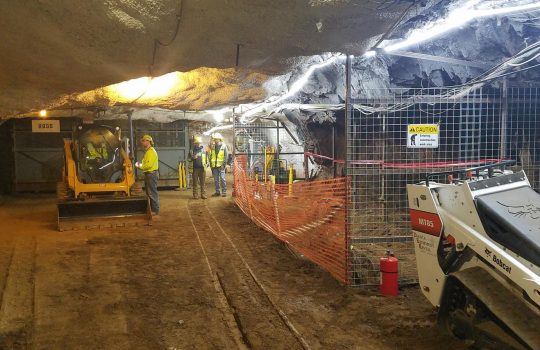Excavating for science in former gold mine
- Deep Underground Neutrino Experiment
- DUNE
- LBNF
- Long-Baseline Neutrino Facility
- neutrino
- Sanford Lab
- Sanford Underground Research Facility
- South Dakota
From Construction Equipment Guide, May 15, 2019: Fermilab’s Chris Mossey and Doug Pelletier talk about the international Deep Underground Neutrino Experiment, hosted by Fermilab, and the Long-Baseline Neutrino Facility, much of which will be built in the extensive maze of caverns at the former Homestake gold mine in South Dakota’s beautiful Black Hills. The site is being transformed into a laboratory designed to unlock the mysteries of some of the smallest particles in the universe, neutrinos.




